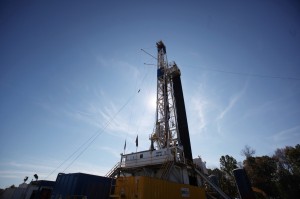 Natural gas futures were slightly lower during early trade in Europe today, after adding more than 2.5% on Monday with support from relatively high US temperatures. Weather patterns project cooler and more comfortable temps to be swinging back to the US, however, pressuring the blue fuel.
Natural gas futures were slightly lower during early trade in Europe today, after adding more than 2.5% on Monday with support from relatively high US temperatures. Weather patterns project cooler and more comfortable temps to be swinging back to the US, however, pressuring the blue fuel.
Front-month natural gas futures for delivery in September traded at $3.927 per million British thermal units (mBtu), down 0.25%, at 11:29 GMT on the NYMEX. Prices ranged from $3.921 to a two-week high of $3.959 per mBtu. The blue fuel added ~2.5% on Monday.
“We see little reason weather wise why prices would go over $4.00,” analysts at NatGasWeather.com said in a note to clients today. “It won’t be long before big fat 90+ builds are going to be pressuring the markets as deficits continue to diminish.”
Last week’s official US natgas storage report revealed 88 billion cubic feet (Bcf) were added to inventories in the week through August 15th. The build was larger than the expected 83 Bcf and was almost double the 5-year average gain for the week, while also marking the sixteenth straight week of higher-than-average injections.
Dropping temperatures in the summer ease cooling demand, which in term lowers overall natural gas consumption, as 30% of all US natgas is burned in power stations, generating electricity for air conditioners, among all other things.
This week’s report, which will cover the seven days through August 22nd, is expected to be leaner than the previous builds, though still quite larger than the average. 90+ Bcf builds are forecast to be returning as soon as next week, and triple digits will soon hit markets as well, as analysts agree that inventories will be fully replenished ahead of heating season, which typically starts in November.
US weather outlook
NatGasWeather.com projected a couple more days of heat this week, before a cooler Canadian system tracks through the central US, lowering temp to comfortable across many of the high-demand states. The South will also slightly cool, though readings will remain seasonal. The northwestern states will see cool weather as storms track through the region, while California is set for a very hot second half of the week. Overall cooling demand will be moderate-to-high in the first half, easing to moderate later on.
“There is nothing in the data to suggest intense summer heat will be returning, especially to the northern US where much more comfortable temperatures could last for quite some time,” NatGasWeather.com said.
New York is set for quite a warm day, with temperatures several degrees above average at 69-88 Fahrenheit, according to AccuWeather.com. Temps will be quite high tomorrow as well, possibly reaching into the 90s. Readings will be lower starting Thursday, however, as the cool Canadian system reaches the area, bringing temps down to seasonal and slightly below. Chicago is already cooler than normal, with temperatures at 66-77 degrees, a few below average. Readings will drop further over the next two days, before rising to near-seasonal for the weekend, as quite a few storms are projected throughout the week.
Down South, Houston will have seasonal temperatures today and for the following few days, ranging 77-92, and accompanied by several storms and showers. Readings will remain seasonal through to the middle of next week, when temps will go down a bit. Over on the West Coast, Los Angeles is having normal temperatures today, between 64 and 83 degrees, before a 6-7 degree warming starting tomorrow. Readings will moderate back to near-seasonal into next week.
Next week is set for cooler than normal temperatures across the central and northern US, while the South remains seasonally warm. Cooling demand will be moderate-to-low.
Technical support and resistance levels
According to Binary Tribune’s daily analysis, September natural gas futures’ central pivot point stands at $3.908. In case the contract penetrates the first resistance level at $3.973 per million British thermal units, it will encounter next resistance at $4.009. If breached, upside movement will probably attempt to advance to $4.074 per mBtu.
If the energy source drops below its first support level at $3.872 per mBtu, it will next see support at $3.807. If the second key support zone is breached, the power-station fuel’s downward movement may extend to $3.771 per mBtu.





